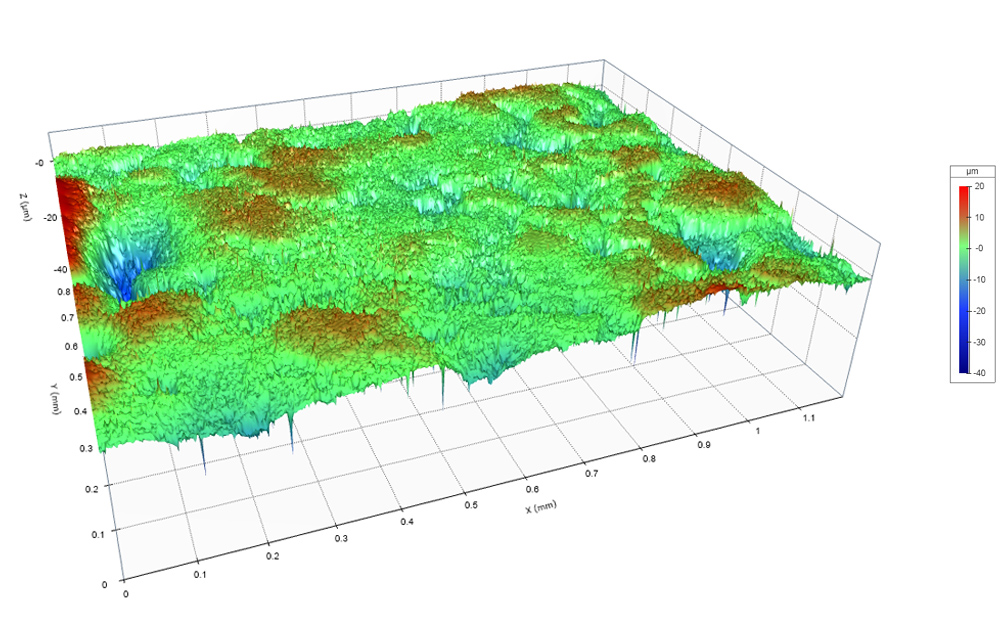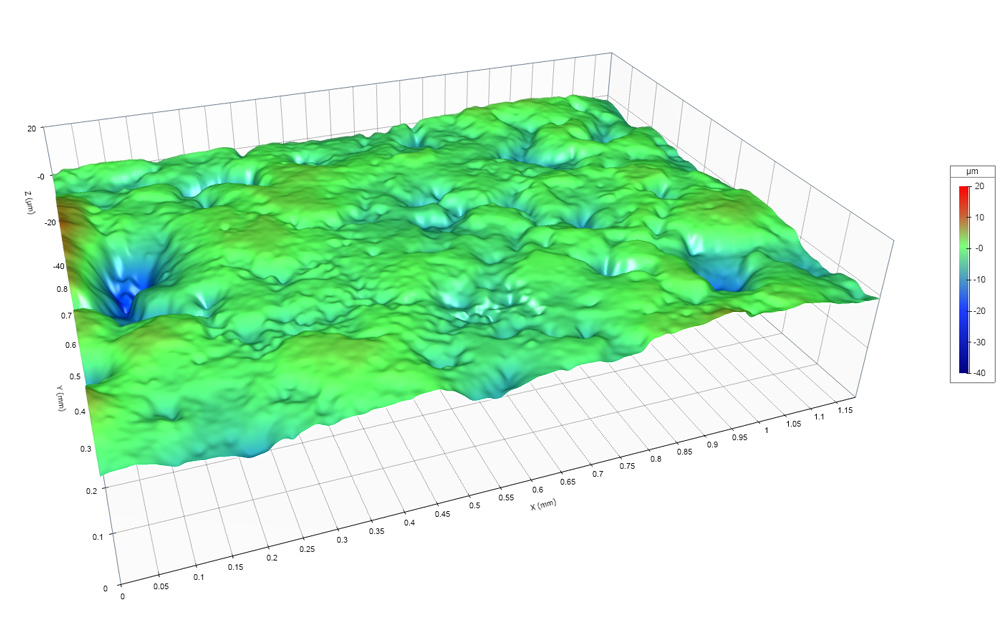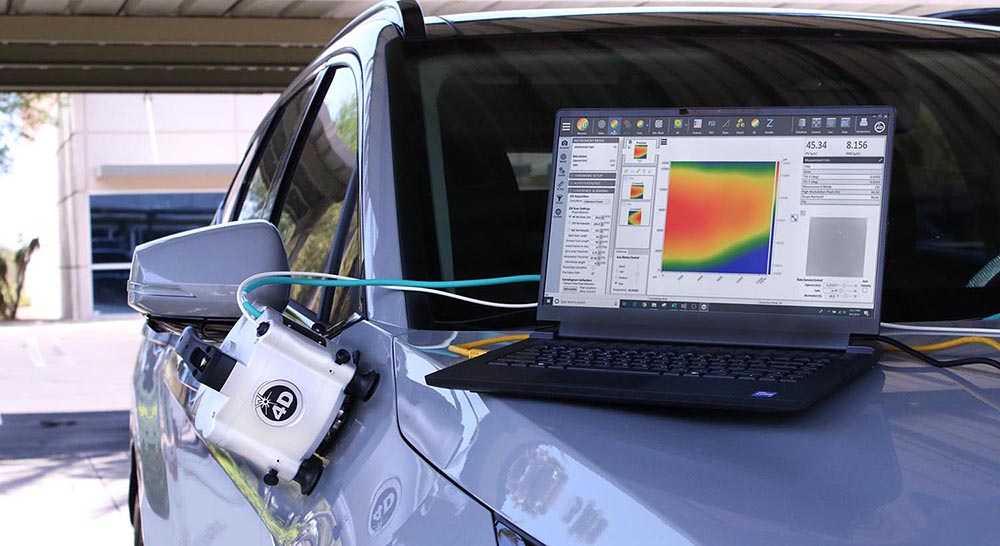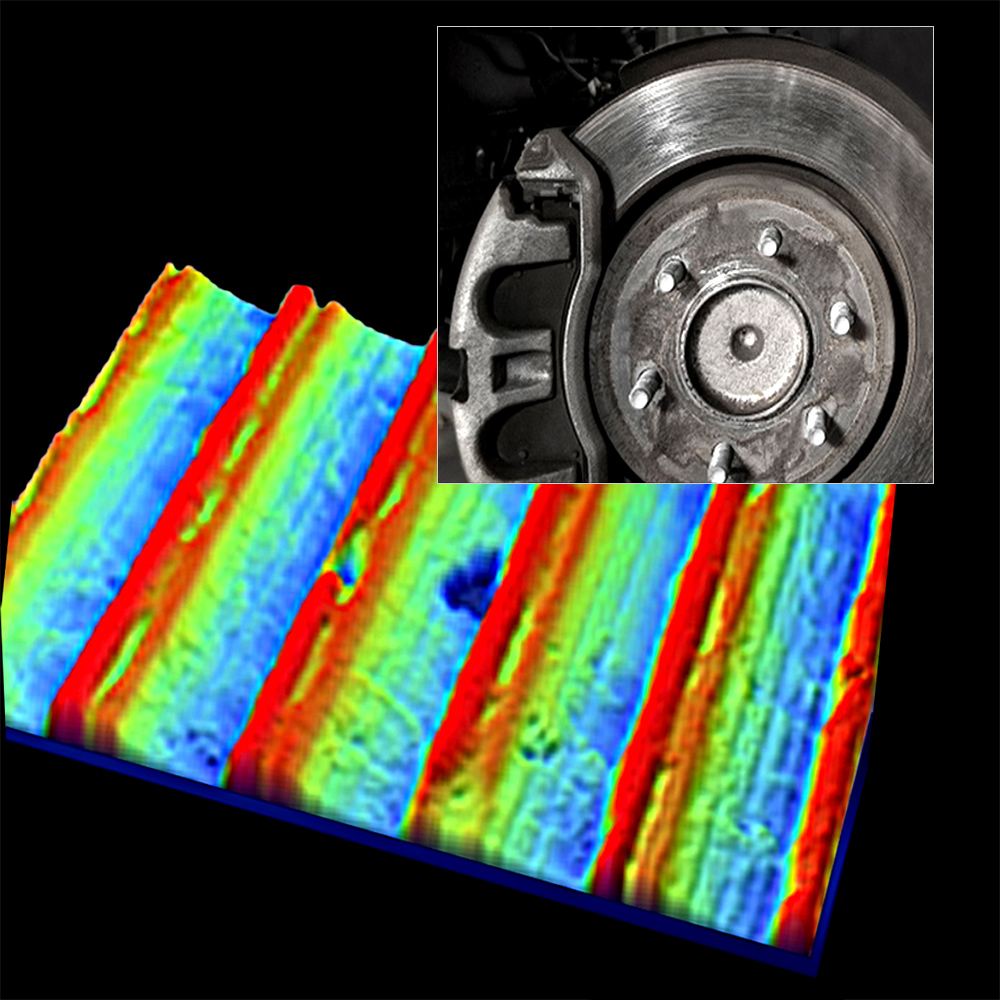Sdq
Sdq is a general measurement of the slopes in a surface. It is the Root Mean Square (RMS) Surface Slope comprising the surface, evaluated over all directions.

Application
Sdq can often differentiate surfaces with similar average roughness, Sa. Sdq has applications for describing sealing systems and in finish/cosmetic appearance. It may be related to the degree of surface wetting by various fluids. Sdq is affected both by texture amplitude and spacing. Thus for a given Sa, a wider spaced texture may indicate a lower Sdq value than a surface with the same Sa but finer spaced features.
Appearance
In the example below, a plated surface has a matte finish, and an Sa value of 2.115 µm.

After polishing, the surface has a near-mirror finish…yet the Sa value has barely changed: 2.034 µm.

After polishing, however, the Sdq dropped from 22.441° to 7.563°. in this case, Sdq is responsive to the same kinds of texture that our eyes perceive.
Finish
A “shiny,” or “gloss,” surface will reflect most of the incident light. A “dull,” or “low gloss” surface, will scatter light in all directions. While both matte and dull surfaces are low gloss, a matte surface may actually have a non-random texture. In fact, most manufactured matte finishes exhibit a pattern on a certain scale.
Parameters, such as Sdq can provide a much more useful description than Ra for differentiating these finishes.

Noise
The source of many squeaks and squeals may be related to 3D surface roughness. Surface measurement parameters such as Sdq may point to the cause.

